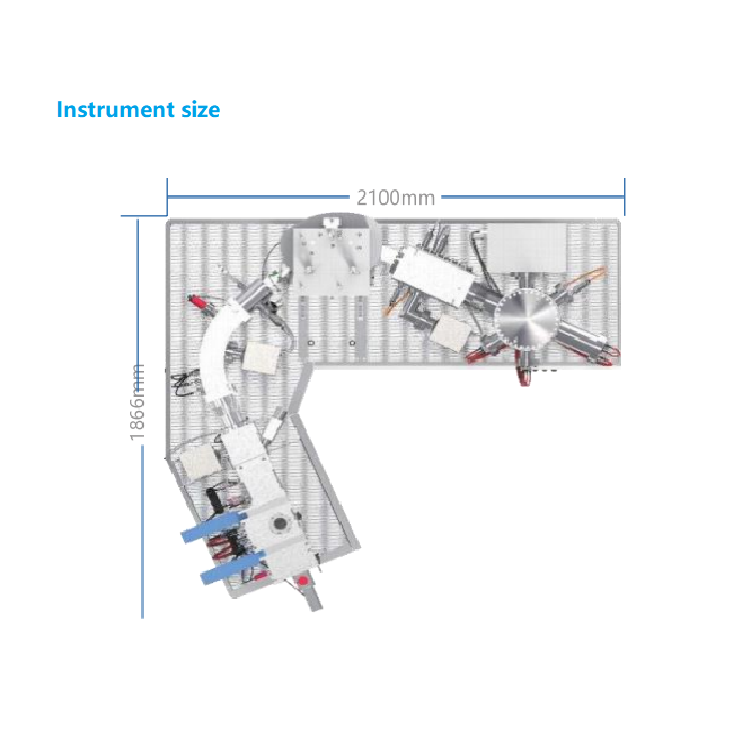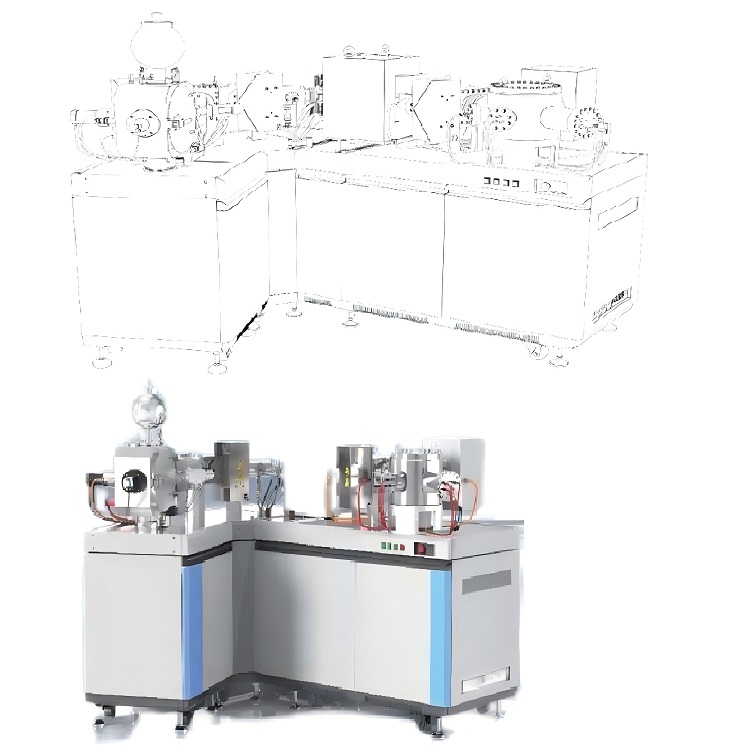
Type :
THR - G DMSThe domestically produced THR-GDMS instrument adopts a slow flow glow discharge ion source and is equipped with needle shaped and sheet-like sample racks, which can be used for material analysis of conductors, semiconductors, insulators, powders, coatings, and other materials. The structural design of liquid nitrogen cooled ion source makes it easy to analyze low melting point metals such as gallium. Specially designed gas purification device and vacuum internal baking minimize the background of C, N, and O gas elements. The instrument adopts a forward Neil Johnson structure with a mass dispersion of 570mm, and is designed with three levels of resolution (400/400/10000 (10% peak valley definition) for fast switching of slits. The magnetic analyzer adopts magnetic field measurement closed-loop control to eliminate the influence of hysteresis effect on the accurate setting of mass number. The detection system is equipped with Faraday cup, electron multiplier simulation method, and counting method, and the instrument has a linear dynamic range of up to 1012 orders of magnitude.

The THR-GDMS offers numerous advantages for high-precision elemental analysis in solid materials. Below are the key features and benefits:
· Liquid Nitrogen-Cooled Glow Discharge Ion Source: Significantly reduces gas interference and improves sensitivity, especially for low-melting-point metals like gallium.
· Slow-Flow Glow Discharge: Ideal for analyzing a wide range of materials including conductors, semiconductors, insulators, powders, and coatings.
· Specialized Gas Purification: Ensures the lowest possible background contamination from carbon (C), nitrogen (N), and oxygen (O).
· Nier-Johnson Magnetic-Electric Double-Focusing Design: Delivers exceptional mass dispersion (570 mm) and reduced ion optical aberrations for perfect peak shapes and accurate measurements.
· Resolution Switching: Features three fixed-resolution slits (400, 4000, 10000), enabling rapid switching for varying analysis requirements.
· Precise Mass Measurement: Ensures long-term stability with magnetic field measurement and closed-loop control, eliminating hysteresis effects.
· Dual Detector Structure: Uses both Faraday cups and secondary electron multipliers for accurate ion detection and efficient analysis across a broad dynamic range.
· Real-Time Gain Adjustment: Front-end amplifiers with adjustable gain (109Ω, 1010Ω, 1011Ω) and the ability to switch between detectors quickly for dynamic signal optimization.
Precision Data Acquisition: Equipped with a 24-bit data acquisition system, the HR-GDMS ensures high-accuracy data capture for ppm-level precision.

Technical Specifications of High-Resolution Glow Discharge Mass Spectrometer (THR-GDMS)
| Parameter | Specification |
| Ion Source | Liquid nitrogen-cooled glow discharge, DC mode |
| Mass Range | 6 ~ 280 amu |
| Mass Stability | Better than 25 ppm/30 min |
| Mass Resolution | 3 fixed resolution slits (low: >400, medium: >4000, high: >10000) |
| Average Background | ≤ 0.2 cps |
| Sensitivity | ≤ 20 ppb (at medium resolution) |
| Ion Count Performance | Dark noise ≤ 10 cpm, Detection efficiency > 95% |
| Dynamic Range | Not less than 10^12 |
| Faraday Cup Performance | Dynamic range 0-50V, Deep cup structure, Low noise |

What materials can the THR-GDMS analyze?
The THR-GDMS is capable of analyzing a wide range of materials, including conductors, semiconductors, insulators, powders, and coatings. Its liquid nitrogen-cooled ion source allows for the analysis of low-melting-point metals like gallium.
What is the resolution of the THR-GDMS?
The HR-GDMS provides three selectable resolution settings: low resolution (>400), medium resolution (>4000), and high resolution (>10000), allowing for highly detailed analysis.
How does the THR-GDMS achieve such high sensitivity?
The THR-GDMS employs a liquid nitrogen-cooled glow discharge ion source and a highly efficient ion transfer lens, reducing background interference and maximizing ion transmission for increased sensitivity.
What is the maximum dynamic range of the THR-GDMS?
The instrument offers a dynamic range of up to 10^12, making it suitable for detecting elements over a wide concentration range, from trace to ultra-trace levels.
What is the typical sensitivity for trace elements in the THR-GDMS?
The THR-GDMS can detect trace elements at concentrations as low as 20 ppb, depending on the sample and the resolution setting.
Can the THR-GDMS switch between different resolutions during analysis?
Yes, the THR-GDMS features three fixed resolution slits that can be quickly switched during analysis to optimize performance based on the element and sample being measured.
What type of detector does the THR-GDMS use?
The THR-GDMS uses a dual detector system, combining Faraday cups and secondary electron multipliers for optimal signal detection across different ion currents.
How is the background noise controlled in the THR-GDMS?
The THR-GDMS incorporates a gas purification system and internal vacuum baking to minimize contamination from carbon, nitrogen, and oxygen, ensuring a clean analysis environment.
What industries benefit from THR-GDMS technology?
The THR-GDMS is widely used in semiconductor, alloy, high-purity metal, and materials science industries for trace and ultra-trace elemental analysis.
How does the THR-GDMS ensure precise mass measurements?
The instrument employs a Nier-Johnson magnetic-electric double-focusing mass analyzer with magnetic field stability control and rapid response to ensure precise mass measurements.
· High-Resolution Glow Discharge Mass Spectrometer (HR-GDMS)
· High-Precision Dual-Focus Thermal Ionization Mass Spectrometer (DF-TIMS)
Tags :